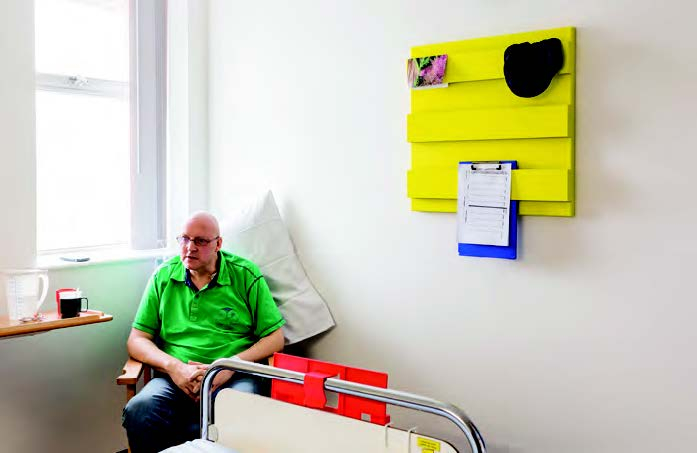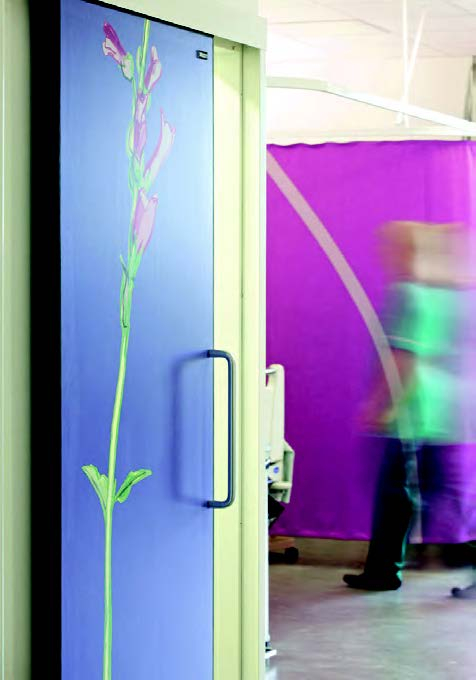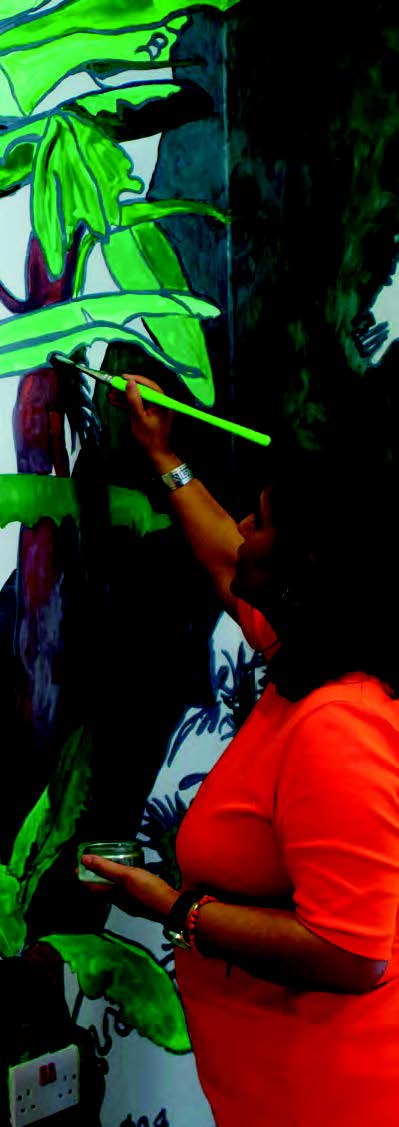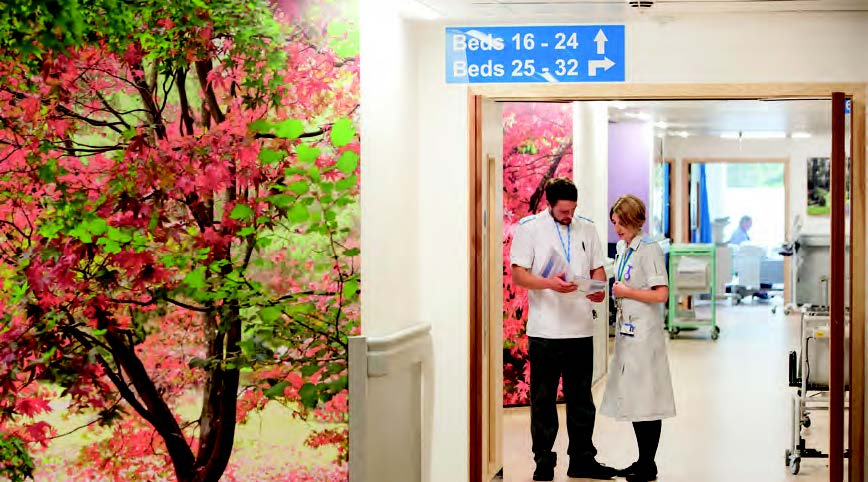
How the arts can turn a dull inpatient space into a healing environment.
For the past decade there has been growing evidence for the inclusion of artworks and participatory arts projects in hospitals and other care facilities.
And it now widely accepted that any new-build or refurbishment project within the sector should have a dedicated arts budget.
While pictures, paintings and statues are placed in corridors, waiting rooms, outpatient departments and lobby and entrance areas, inpatient environments are increasingly overlooked.
However, with some people bed bound for many weeks, ward spaces and patient rooms should be prioritised.
Causing a distraction
Jane Willis of arts in health consultancy, Willis Newson, said: “Pictures make the environment more approachable for patients and visitors. Art also provides sensory stimulation and enjoyment, as well as a distraction of focus away from illness.
“Artworks can remind people of their sense of self and identity outside of that of being a patient, reconnecting them with all they value and hold dear.”
The long term role of art
Shenai of Art In Site explains, “When people are staying in hospital long-term you need to think about long-term roles for art.
“Having detailed, beautiful, subtle art that people can “come back to” is good, as they might be seeing it quite a lot. The worst thing is something that is easy the first time you see it and boring on a second or third viewing.
Art for visitors
Shenai said, “People in inpatient wards are more likely to be getting visitors, especially children. At Evelina Children’s Hospital, for example, we’ve been doing a lot of work aimed at siblings and parents as well as patients”.
Art to personalise spaces
At Bristol Haematology and Oncology Centre, Willis Newson worked with artist, Jeremy Hutchinson, on a series of works for the patient rooms, funded by the hospital charity, Above & Beyond.
As well as providing something pleasing to look at, the bright-yellow sculptures were designed so that patients could create their own ’still life’ - a place to store personal possessions like books, hang up a hat, or display family photos.
Shenai said: “As a patient, being able to put your mark on a space is very important. Every patient will be different, so they can be adapted to suit individual preferences.
At Evelina London Children's Hospital we are developing a series of beautiful, colourful blinds that can be drawn together or apart to create an interplay of colour and light, just as the patient needs or likes. This helps to bring back a sense of the space being theirs”.
Other needs
Also driving the choice of artwork are key health considerations such as infection control and fire safety. And, predictably, budget will also have an impact.
Subject matter and style
Nature is a perennially-popular theme, being backed up by considerable research into its beneficial effect, said Willis.
“However, subject matter, and its treatment within an artwork, should be patient or condition specific.
“A long-stay patient may suffer boredom and need distraction and an artwork that rewards repeated viewing.
“A patient in pain, however, may feel distressed and need an artwork that calms and soothes; while a patient drifting in and out of consciousness might need a work that is not confusing, or that anchors them back into the present moment.
Culturally specific and locally relevant artwork
At Bristol Royal Infirmary, award-winning photographer Simon Roberts, has created photographic artworks. They reflect the city’s culture, landscape and history, helping to give the building a unique identity. They prompt conversation and make the hospital environment feel more welcoming and less clinical.
Research is vital to choosing the right works of art, said Willis, and staff patients, and other stakeholders should be consulted.
The series of photographs and collaged montages have been installed as wall vinyls, printed ceiling tiles, and framed images for inpatient wards across seven floors.





Be specific
"Be clear about the need and how art will support patients and staff” Willis said. “Identify specific benefits, backed up by research. For example, is the need around wayfinding? Or to support patients who suffer boredom and need stimulation and distraction to ward off depression and anxiety?”
High standards
Hospital Rooms originally worked in galleries and museums and believes the standard of artwork in hospitals should be comparable. Curator and co-founder, Niamh White, said: “We believe that by putting artwork that might ordinarily be found in the National Portrait Gallery or the Tate in spaces that provide care to some of our most-vulnerable and isolated members of the community; we can instil people with dignity, value and wellbeing.”
Focusing on delivering high-quality projects also attracts much-needed funding for hospital arts schemes, she added.